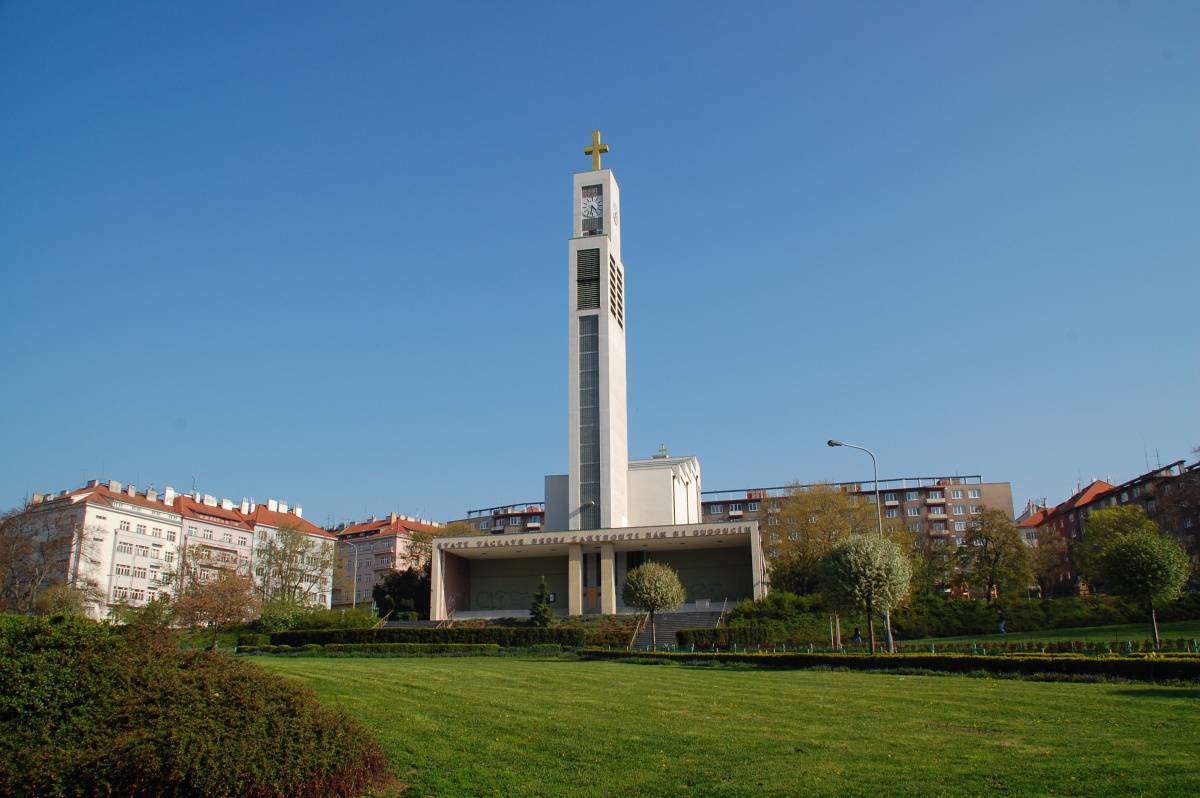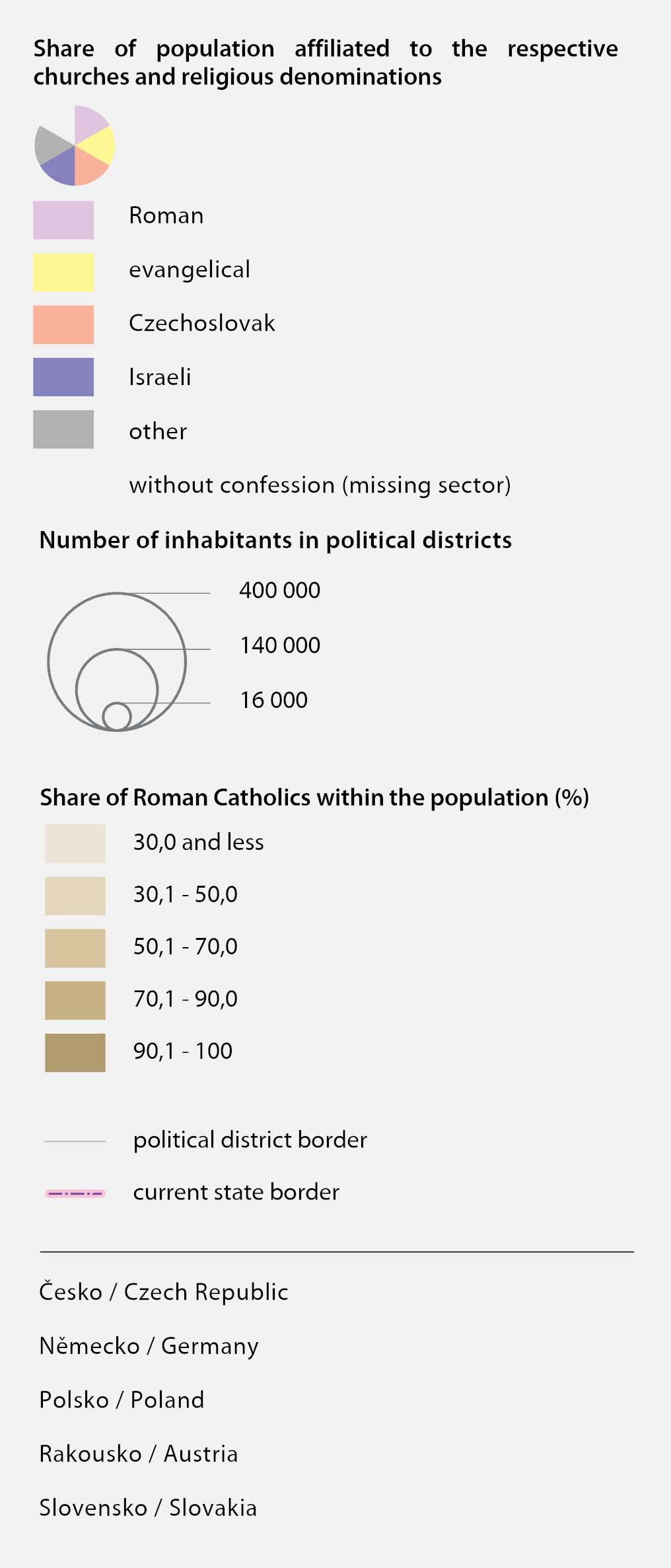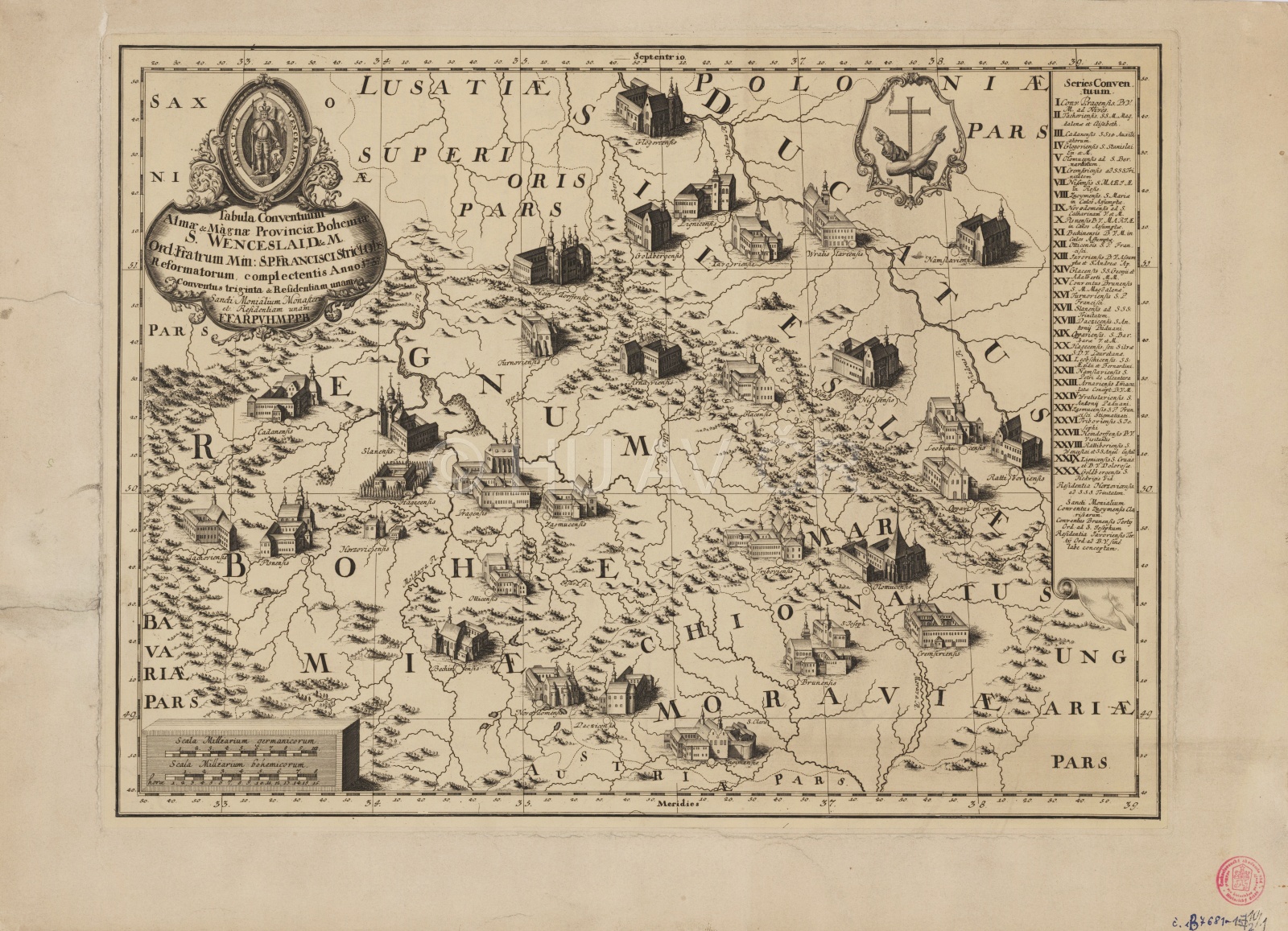Religious confessions in the Czech Lands until 1935
According to the 1930 census, the Roman Catholic denomination prevailed in the religious structure of the Czech Lands and the territorial differences between Bohemia and Moravia were not very significant in this respect. The other denominations included the Evangelical Church of Czech Brethren (since 1918) and the Czechoslovak Church (since 1920, later referred to as the Czechoslovak Hussite Church) whose share was slightly higher in Bohemia and Silesia. Religious Jewish communities in Bohemia were most represented in large towns, namely in Prague while in Moravia and Silesia, they also concentrated in smaller towns. The share of non-religious people was very low, especially in Moravia.

The modernistic Roman Catholic Church of the Most Sacred Heart of the Lord in Jiřího z Poděbrad Square at Prague Vinohrady was built between 1928 and 1932 by architect Jože Plečnik. Photo VitVit, 2016.

Roman Catholic Church of St. Wenceslas in Prague Vršovice. Built according to Josef Gočár’s project between 1929 and 1930. Photo Dana Vondrášková, 2010.
References
Atlas Republiky Československé. Praha 1935;
Přidalová, I. – Pospíšilová, L. – Nemeškal, J.: Náboženství v Česku. Specializovaná mapa. Přírodovědecká fakulta Univerzity Karlovy v Praze. In: Ouředníček, M. a kol., Atlas obyvatelstva, mapa č. 5.1. Praha 2015. Online, dostupné z: http://www.atlasobyvatelstva.cz/ [20/03/2020];
Černušák, T. a kol.: Papežství v tisíciletých dějinách. Praha 2017;
Semotanová, E. – Zudová-Lešková, Z. ‒ Močičková, J. – Cajthaml, J. ‒ Seemann, P. ‒ Bláha, J. D. a kol.: Český historický atlas. Kapitoly z dějin 20. století. Praha 2019.

This work is licensed under a Creative Commons BY-NC-ND 4.0
Religious structure of the Czech Republic until 2011
The religious structure in Czechia and the nature of its territorial distribution experienced numerous transformations during the 20th century and in the early 21st century. A map based on the 2011 census shows a strong increase of people without religion as the result of social transformations as well as considerable territorial differences – a greater share of religious population in Moravia (namely the Czech-Slovak borderland) and in Silesia. In 2011, we can observe lower domination of the Roman Catholic confession compared to the other confessions. Especially north-west Bohemia and Silesia are characterized by a larger share of the evangelists and members of the Czechoslovak Hussite Church, the latter is more widespread also in the Liberec and Hradec Králové regions. A greater share of the Orthodox Church can be observed in larger towns and in the Karlovy Vary region, which corresponds with a larger representation of the Russian and Ukrainian ethnic minorities.

Roman Catholic Church of St. Joseph in Senetářov in a modern style as an example of one of the few churches built in the communist era. Photo Ludvík Kolek (?), 1992.
References
Přidalová, I. – Pospíšilová, L. – Nemeškal, J.: Náboženství v Česku. Specializovaná mapa. Přírodovědecká fakulta Univerzity Karlovy v Praze. In: Ouředníček, M. a kol., Atlas obyvatelstva, mapa č. 5.1. Praha 2015. Online, dostupné z: http://www.atlasobyvatelstva.cz/ [20/03/2020];
Semotanová, E. – Zudová-Lešková, Z. ‒ Močičková, J. – Cajthaml, J. ‒ Seemann, P. ‒ Bláha, J. D. a kol.: Český historický atlas. Kapitoly z dějin 20. století. Praha 2019.

This work is licensed under a Creative Commons BY-NC-ND 4.0

